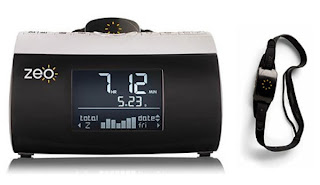We should first begin with a brief history of medical devices. Watch this video:
Dr. Eric Topol, a cardiologist and director of Scripps Translational Science Institute in California, has made a presentation to TED in February of 2010 on the amazing advances in this area. He also heads the West Wireless Institute in San Diego.
At the CES show this year, Dr. Topol demonstrated medical devices live. We go to the second part of the video that shows the specific medical devices.
BodyMedia
There is a company that has popularized the wearing of devices to track caloric intake, burning and weight management. These devices are available now and are wireless wearable devices. But this is just the beginning. These devices although they handle general good health habits, eating, exercise and sleep. There more specialized devices coming along the way that could give a doctor all the information needed immediately.
iRhythm
This company is much more focused on specific medical purposes for health care professionals. This device is worn on the chest and performs a EKG continually for up to 14 days. The patient mails it back when done, and it is recyclable. Devices like these will become completely inexpensive and soon merge with other devices which will provide a fairly complete checkup. Their cost will be so low that they will be consumer items.
Zeo Personal Sleep Coach
By wearing a headband, the bedside display picks up the your personal sleep information. It gives you a personal sleep grade and demonstrated the different types of sleeps you have experienced that night. This information can be uploaded to their website and keep track of a sleep journal.
Corventis Piix
This is a device that is placed on ones chest providing the doctor with live information sent wirelessly, giving heart activity and other physiological factors.
Proteus Biomedical
This company currently has under clinical trials a device called chip called the Raisin. It is a digestible and ingestible chip that can be put into medicines. It is activated by stomach acids and transmits a wireless signal from within the body. It is made from digestible food products and powered by stomach acid. There are also working on something called the ChipSkin which would be designed to protect other devices inside the body from degradation due from bodily acids.
CVRx
The device The Rheos attempts to regulate blood pressure. Here is a video of it that explains it.
HQInc
From the company's own website we have the following description: "wirelessly transmits core body temperature as it travels through the digestive tract. The sensor’s signal passes harmlessly through the body to the CorTemp® Data Recorder worn on the outside of the body. Designed for human use only. 262 kHz." Since 2006 it has been used with athletes to measure their body temperature to assure they are not overheating. Here is a video of Lance Armstrong taking this pill to monitor his core body temperature.
Smart Fabrics
Another approach to medical sensing devices is to attach them to "smart fabrics." They devices would be embedded in the clothing. Two engineers at the University of Arkansas, Taeksoo Ji and Soyoun Jung have been researching these fabrics:
We’re trying to move diagnostic testing out of the laboratory and directly to the patient,” said Taeksoo Ji, assistant professor of electrical engineering. “Although there has been some success at this effort over the past decade, traditional materials are not suitable for manufacturing low-cost, large-area sensor devices. The advantages of organic semiconductors will allow manufacturers to produce devices that are light, flexible and easily integrated into biomedical applications such as smart vests and fabrics.The latest generation of smart fabrics contain tiny electronic sensors that can monitor body temperature, heart activity, and even analyze their sweat to provide an assessment of their health.
Some applications are already being met by a research company called MicroNano technologies. Here is a full explanation of their intents for the future. Biotex, another company working on smart fabrics makes a very telling statement. Our health industry is used to static pictures of physiological conditions in the average lab test that is performed. Technology WILL change this. As Dr. Potol has said health care will be data driven now more than ever. It's new and healthcare providers are not used to it. Dr. Jung from Biotex researh states, "We are not used to the information that continuous, remote monitoring can provide – so different to the one-off laboratory tests that are usually taken. BIOTEX makes this remote monitoring possible, but more research into the links between these indicators and disease conditions and states will make it realistic."
In June of 2009, Wired Magazine reviewed some of them then existing iPhone apps to monitor your health. We shall review some of them. The first one is called iBP made by iiwiisoftware. Here are some screen shots of the app:

We have just scratched the surface in this short article. The research is proceeding at a very fast pace. We will all be shocked by what will be produced and its effects on medicine in the next five years.















No comments:
Post a Comment